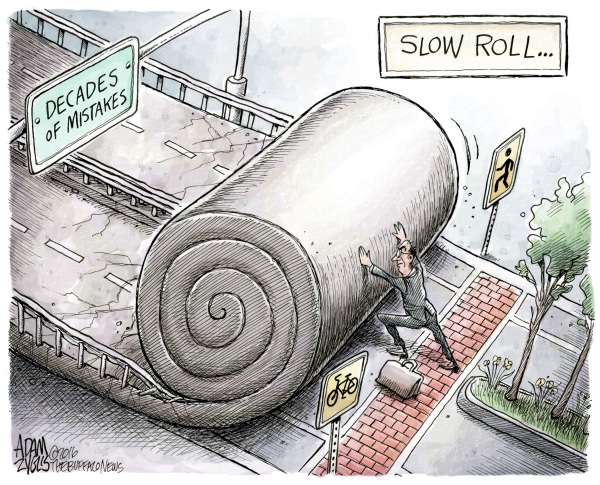The evening commute on Highway 1 shows the heavy traffic of people heading back to Lompoc at the end of their workday in Santa Barbara. While driving that road, I recalled a story published by the Santa Barbara Independent (“Santa Barbara Doubles Down on Housing Density”) about the City Council’s discussions on city growth.
It is clear that the councilmembers did not share a common vision of the problem and, consequently, of how it should be addressed. Some expressed the urgency of addressing the affordable housing needs of those who make the very existence of the city possible, i.e., those who make a fundamental contribution to its existence: educators; childcare, health-care, and elderly care workers; gardeners and painters; house and office cleaners; cooks and waiters, etc. People who, despite their great contribution to the city, are forced to spend more than 50 percent of their income on rent, or else commute from Lompoc, Ventura, Oxnard, Buellton, or Santa Ynez and return at the end of the workday.
Mayor Randy Rowse clearly expressed his refusal to “sacrifice” what makes Santa Barbara “something special.” It is unclear whether the mayor was referring to the many one-bedroom apartments inhabited by more than one family in which children and adults share a small space for play, food, rest, conversation and all that daily life entails, or to those who spend more than half of their salary paying rent, or to the time and expense spent by many families commuting back and forth to neighboring communities every day. Not to mention the impact this traffic has on air quality in the broader region which includes Santa Barbara and surroundings. It is not advisable to think of Santa Barbara as isolated from its immediate surroundings. It is necessary to keep in mind that whatever is done here has had, and continues to have impacts on the broader region of which we are a part.
This issue has been at the center of several debates about urban planning in Santa Barbara. Decades ago (the 1974 document is referenced in “Rich Appelbaum: Creating the Future,” from 2015), the city commissioned a leading group of academics and activists to help formulate an urban development plan, specifically zoning for housing. They asked what the impacts of urban growth would be in Santa Barbara. Their analysis came to a conclusion similar to the considerations that Mayor Rowse expressed recently: If more growth is allowed, what makes Santa Barbara “special” will be “sacrificed.
At the same time, other cities along the California Coast (see the well-known Petaluma case) were involved in similar discussions: Is it good to grow or not? If it grows, what type of growth is the most appropriate, the least unfair to its inhabitants? etc. The result has been similar to that of our Santa Barbara: The city has grown, its economy has diversified and expanded, more people have been employed in its thriving industries, particularly in higher education and research, technology, tourism, services, etc. Yet we suffer from the same problems: a city that mistreats its inhabitants, those who keep it thriving, for whom living here means an enormous sacrifice.
It is imponderable to think of our urban future as something more just and inclusive, but also one that incorporates in its planning agreements with neighboring communities where a substantial part of those who care for our children, our elderly and our sick, those who educate them, those who keep our gardens beautiful and paint our homes and businesses, also reside. Our city will be even more beautiful when it has the capacity to accommodate all those who, in one way or another, make Santa Barbara possible every day.

